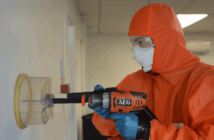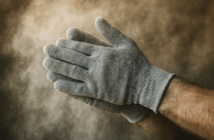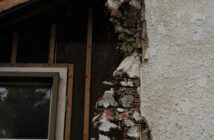Always assume that flood water (and therefore silt) is contaminated with farm run-off, chemicals, or sewage, WorkSafe says

You need to take precautions when you are disturbing silt or floodwater when working. Contaminated flood water and silt can make you sick.
There are three ways you can come into contact with things that will make you sick, either in the short term or a number of years or decades later.
- Things you could breathe in if they get in the air:
- general dust
- asbestos
- respirable crystalline silica
- legionella bacteria
- gases including hydrogen sulphide, ammonia, chlorine, carbon monoxide
- vapours (solvents, pesticides, herbicides, paints)
- fungi
- metal dust
- heavy metals (arsenic, lead, mercury).
- Things you could accidentally ingest (for example, from droplets entering your mouth or nose, or from contaminated hands on food or cigarettes):
- bacteria (including E. coli, salmonella, leptospiroda, campylobacter)
- heavy metals (arsenic, lead, mercury).
- Things that could come into contact with your skin or eyes:
- volatile organic compounds, including glues, solvents, pesticides, herbicides, paints
- bacteria
- viruses
- fungi.
Before you dig or move silt
- Consider what is upstream or nearby. Are there factories or industrial buildings, sewerage treatment plants, landfill tips, animal feedlots, chicken sheds, or piggeries?
- Search the area for any debris that might suggest that asbestos, chemicals, or rotten animals may be present. Are there chemical drums, broken building materials, open septic tanks, buried vehicles, shipping containers, discoloured or unusual looking soil?
- Are there any unusual smells such as decaying animal carcasses, decaying food, rotten egg gas, or chemical smells?
If you see or smell something suspicious, stop and seek advice from a specialist such as an appropriate environmental scientist or occupational hygienist before digging or moving silt.
Find an appropriate adviser | HASANZ Register
When digging or moving silt
Where possible, use machinery such as an excavator, tractor, or a loader to do the job. Keep all doors and windows on the machinery closed while digging.
If moving silt by hand, cover up as much as possible, use personal protective equipment (PPE) like:
- coveralls
- gloves
- safety glasses, goggles, or face shields
- masks such as a P2 disposable or reusable half face respirator with P2 filters.
Personal protective equipment (PPE)
Avoid using water blasters on silt and dirty surfaces as this will cause harmful germs and asbestos and chemicals to get into the air. Use normal low pressure hoses and brooms to push wet material without making it airborne.
Regularly take breaks and make sure you wash your hands and face with soap before eating, drinking, smoking, or vaping (hand sanitiser will not work against chemicals).
If you cut yourself or break the skin, stop work and apply first aid including cleaning the wound. Seek medical attention if you think it might be infected or if the cut is deep.
Stop work if you find any debris that may be hazardous such as fibre cement roofing or cladding, chemical drums, or an animal carcass. Check that you are able to safely deal with it before returning to work. If in doubt seek advice from a specialist such as an environmental scientist or occupational hygienist.
If you or your staff experience any health issues (including dizziness, skin rash, eye irritation, or breathing problems) stop work immediately, provide your staff with adequate first aid and seek advice from an appropriate environmental specialist or occupational hygienist before recommencing work.
When you are finished
- Remove PPE and dispose of it, or place items to be cleaned in a separate sealed bag.
- Ensure all visible mud and debris on footwear is washed off and spray the footwear with a disinfectant such as bleach.
- Immediately wash hands, arms, and face with warm soapy water. When able to, shower using soap to remove any chemicals or germs that you may have been exposed to.
- Wash all clothing used separately from regular laundry. Consider wearing a mask and gloves when removing it from the bag it is stored in – especially if the clothes are muddy or dusty.








